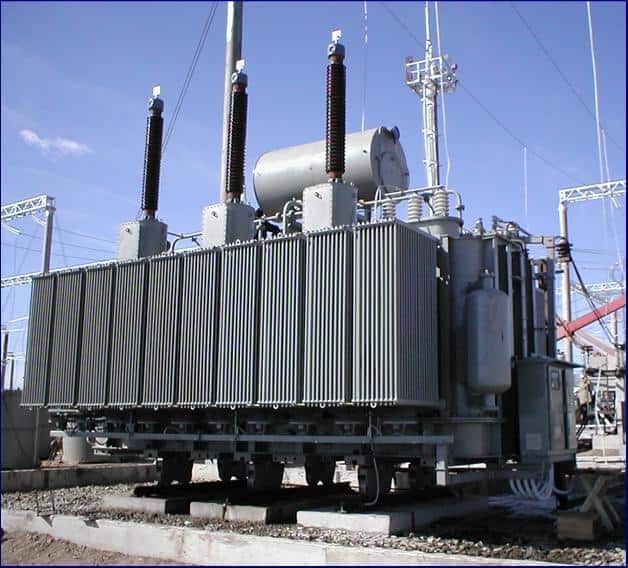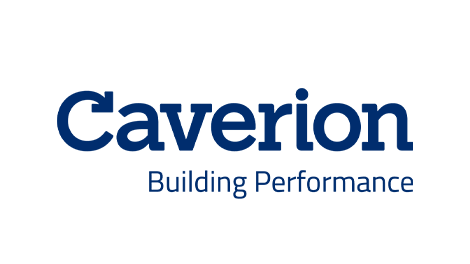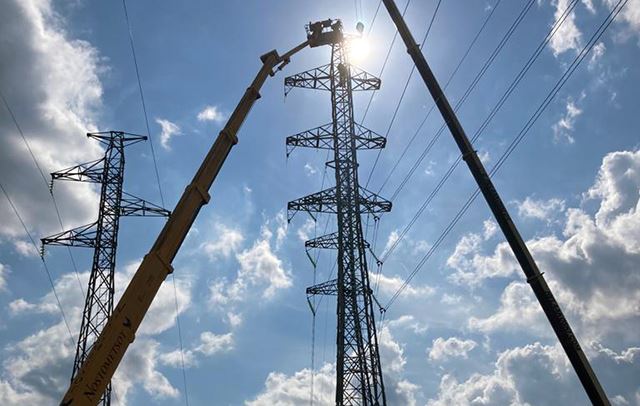Assemblin Caverion Group – Caverion wins an EUR 21 million contract from Fingrid
Finland’s transmission system operator Fingrid Oyj and Caverion have signed an agreement worth approximately EUR 21 million (about SEK 230 million) for a new transmission line project in Western Finland.
Caverion will build two parallel 400/110 kV power lines with a total length of 60 kilometers and 200 steel columns. The project started in October 2025, and the transmission line connection is expected to be completed in 2027.
“This assignment is part of a larger project including 400 km of new 400 kV power lines and several substations. We are pleased to welcome Caverion into the project and are confident in a successful implementation based on our experience of previous 110 kV projects, where Caverion has shown its capabilities”, says Keijo Välimaa, Head of Fingrid’s Power Line Projects unit.
“We are grateful for the trust and long-term partnership with Fingrid. The reliability of the transmission grid and electricity transmission is key to the implementation of the green transition and the success of industrial investments. Caverion’s offering to the energy industry covers services throughout the entire energy value chain, from production to distribution”, says Kari Aalto, Industrial Projects and Infrastructure Business Director, Caverion Finland.
Caverion’s electrical power technology and energy professionals have implemented nearly 50 power line projects of different sizes in Finland over the past ten years.
The power line project now being built will strengthen Fingrid’s transmission capacity and enable efficient electricity transmission from Sweden and northern Finland to southern Finland. The project supports the construction of renewable energy in Finland and the achievement of national climate goals, as well as maintaining electricity self-sufficiency in the country.
SourceAssemblin Caverion Group
EMR Analysis
More information on Assemblin Caverion Group: See the full profile on EMR Executive Services
More information on Jacob Götzsche (Executive Chairman, Assemblin Caverion Group + Member of the Executive Committee (EC) and Member of the Executive Management Team (EMT), Executive Chairman, Assemblin Caverion Group + President and Chief Executive Officer, Caverion Corporation): See the full profile on EMR Executive Services
More information on Mats Johansson (Member of the Executive Committee (EC) and Member of the Executive Management Team (EMT), Group President and Chief Executive Officer, Assemblin Caverion Group): See the full profile on EMR Executive
More information on Ville Tamminen (Member of the Executive Committee (EC) and Member of the Executive Management Team (EMT), Executive Vice President, Chief Executive Officer, Caverion Finland, Assemblin Caverion Group): See the full profile on EMR Executive Services
More information on Kari Aalto (Head of Infrastructure and Industrial Projects, Caverion Industry, Caverion Finland, Assemblin Caverion Group): See the full profile on EMR Executive Services
More information on Fingrid: https://www.fingrid.fi/en/ + Fingrid Oyj is Finland’s transmission system operator: its owners are the Finnish state and Finnish pension insurance companies. Our mission is to secure the supply of energy in our society in all circumstances and to promote a clean, market-based power system.
- The company was established on 29 November 1996
- Operations started on 1 September 1997
- Revenue 1,269.3 million euros (2024)
- Balance sheet total 3.7 billion euros (2024)
- Number of personnel at the end of the year 2024: 597
- Fingrid is headquartered in Helsinki, and the company also has officers in Hämeenlinna, Oulu, Rovaniemi, Vaasa, Jyväskylä and Varkaus.
More information on Asta Sihvonen-Punkka (President & Chief Executive Officer, Fingrid): https://www.fingrid.fi/en/company/corporate-governance/president-and-executive-management-group/ + https://www.linkedin.com/in/asta-sihvonen-punkka-60575525/
More information on Keijo Välimaa (Head of Power Line Projects Unit, Fingrid): https://www.fingrid.fi/en/pages/contacts/media-contact-persons/
EMR Additional Notes:
- Fundamental Units of Electricity:
- Ampere – Amp (A):
- Amperes measure the flow of electrical current (charge) through a circuit. Ampere (A) is the unit of measure for the rate of electron flow, or current, in an electrical conductor.
- One ampere is defined as one coulomb of electric charge moving past a point in one second. The ampere is named after the French physicist André-Marie Ampère, who made significant contributions to the study of electromagnetism.
- Milliampere (mA) is a unit of electric current equal to one-thousandth of an ampere (1mA=10−3A). The prefix “milli” signifies 10−3 in the metric system. This unit is commonly used to measure small currents in electronic circuits and consumer devices.
- Volts measure the force or potential difference that drives the flow of electrons through a circuit.
- Kilovolt (kV) is a unit of potential difference equal to 1,000 volts.
- Watts measure the rate of energy consumption or generation, also known as power.
- Amperes measure the flow of electrical current (charge) through a circuit. Ampere (A) is the unit of measure for the rate of electron flow, or current, in an electrical conductor.
- Power vs. Energy: how electricity is measured and billed.
- Power (measured in kW, MW, GW, TW): Rate at which energy is used or generated at a given moment.
- Energy (measured in kWh, MWh, GWh, TWh): Total amount of power consumed or generated over a period of time (i.e., Power x Time).
- Real Power Units: actual power that performs work.
- Kilowatt (KW):
- A kilowatt is simply a measure of how much power an electric appliance consumes—it’s 1,000 watts to be exact. You can quickly convert watts (W) to kilowatts (kW) by dividing your wattage by 1,000: 1,000W 1,000 = 1 kW.
- Megawatt (MW):
- One megawatt equals one million watts or 1,000 kilowatts, roughly enough electricity for the instantaneous demand of 750 homes at once.
- Gigawatt (GW):
- A gigawatt (GW) is a unit of power, and it is equal to one billion watts.
- According to the Department of Energy, generating one GW of power takes over three million solar panels or 310 utility-scale wind turbines
- Terawatt (TW):
- One terawatt is equal to one trillion watts (1,000,000,000,000 watts). The main use of terawatts is found in the electric power industry, particularly for measuring very large-scale power generation or consumption.
- According to the United States Energy Information Administration, America is one of the largest electricity consumers in the world, using about 4,146.2 terawatt-hours (TWh) of energy per year.
- Kilowatt (KW):
- Apparent Power Units: measures the total power in a circuit, including power that does not perform useful work.
- Kilovolt-Amperes (kVA):
- Kilovolt-Amperes (kVA) stands for Kilo-volt-amperes, a term used for the rating of an electrical circuit. A kVA is a unit of apparent power, which is the product of the circuit’s maximum voltage and current rating.
- The difference between real power (kW) and apparent power (kVA) is crucial. Real power (kW) is the actual power that performs work, while apparent power (kVA) is the total power delivered to a circuit, including the real power and the reactive power (kVAR) that doesn’t do useful work. The relationship between them is defined by the power factor. Since the power factor is typically less than 1, the kVA value will always be higher than the kW value.
- Megavolt-Amperes (MVA):
- Megavolt-Amperes (MVA) is a unit used to measure the apparent power in a circuit, primarily for very large electrical systems like power plants and substations. It’s a product of the voltage and current in a circuit.
- 1 MVA is equivalent to 1,000 kVA, or 1,000,000 volt-amperes.
- Kilovolt-Amperes (kVA):
- Specialized Power Units: used specifically for renewable energy, especially solar.
- KiloWatt ‘peak’ (KWp):
- kWp stands for kilowatt ‘peak’ power output of a system. It is most commonly applied to solar arrays. For example, a solar panel with a peak power of 3kWp which is working at its maximum capacity for one hour will produce 3kWh. kWp (kilowatt peak) is the total kw rating of the system, the theoretical ‘peak’ output of the system. e.g. If the system has 4 x 270 watt panels, then it is 4 x 0.27kWp = 1.08kWp.
- The Wp of each panel will allow you to calculate the surface area needed to reach it. 1 kWp corresponds theoretically to 1,000 kWh per year.
- KiloWatt ‘peak’ (KWp):
- Ampere – Amp (A):
- Substation:
- A power station is where the power is generated. A substation is a critical part of an electrical generation, transmission, and distribution system, where power is split apart, transformed, and distributed further into the grid.
- Substations contain the specialist equipment that allows the voltage of electricity to be transformed (or ‘switched’). The voltage is stepped up or down through pieces of equipment called transformers, which sit within a substation’s site.
- Substations typically include:
- Transformers: The core components for voltage transformation.
- Circuit Breakers: To isolate and protect equipment.
- Switchgear: For controlling and protecting the flow of electricity.
- Shunt Reactors (sometimes): Used to improve system stability.
- Other equipment: Measuring instruments, control panels, etc.
- Transformers (Power Transformers, Distribution Transformers, Traction Transformers, HVDC Converters, Solid State Transformers (SST), Rectifier Transformers):
- A transformer is a passive electrical device that transfers electrical energy from one electrical circuit to another, or to multiple circuits. It can be classified into three types based on voltage change:
- Step-up: Increases voltage and decreases current.
- Step-down: Decreases voltage and increases current.
- Isolation: Provides electrical isolation without changing the voltage.
- Distribution vs. Power Transformers:
- Power Transformers: These are used in high-voltage transmission networks for both stepping up and stepping down applications (e.g., 400 kV, 200 kV). They are generally rated above 200 MVA and are designed for maximum efficiency at or near full load.
- Distribution Transformers: These are used in lower-voltage distribution networks to connect to end-users (e.g., 11 kV, 440V, 230V). They are generally rated less than 200 MVA and are designed for maximum efficiency at 60-70% of their rated load, as they operate at a load less than full load. They perform the final voltage transformation for household and commercial use.
- Specialized Transformers:
- Traction Transformers: These are special transformers used in railway systems to step down high-voltage AC power from the overhead catenary to the required voltage for the train’s traction system. They are typically medium-frequency transformers with ratings ranging from 25 kVA to 25 MVA.
- HVDC Converter Transformers: These are used in HVDC stations. The transformer steps up the generated AC voltages to the required level before it is rectified into DC for long-distance transmission.
- Solid State Transformers (SSTs): Also known as power electronic transformers (PETs) or intelligent universal transformers (IUTs), these are AC-AC converters that can replace conventional transformers. SSTs use power electronic converters in conjunction with a high-frequency transformer, which allows for smaller size and weight.
- Rectifier Transformers: These transformers provide an AC output that is then converted into DC by a rectifier. Their design helps to ensure that the resulting DC is as smooth and stable as possible. They are used in industrial processes that require large amounts of DC power.
- A transformer is a passive electrical device that transfers electrical energy from one electrical circuit to another, or to multiple circuits. It can be classified into three types based on voltage change:

- Shunt Reactor:
- Shunt reactors (SRs) are used in high-voltage energy transmission systems to control the voltage during load variations.
- A shunt reactor is a device that absorbs reactive power, thereby stabilizing the voltage and increasing the energy efficiency of the system. It is the most compact device commonly used for reactive power compensation in long high-voltage transmission lines and in cable systems.
- A shunt reactor can be directly connected to the power line or to a tertiary winding of a three-winding transformer. The shunt reactor can be permanently connected or switched via a circuit breaker. Unlike a power transformer, a shunt reactor typically has only one winding per phase.

- Grid, Microgrids, DERs and DERM’s:
- Grid / Power Grid:
- The power grid is a network for delivering electricity to consumers. The power grid includes generator stations, transmission lines and towers, and individual consumer distribution lines.
- The grid constantly balances the supply and demand for the energy that powers everything from industry to household appliances.
- Electric grids perform three major functions: power generation, transmission, and distribution.
- The power grid is a network for delivering electricity to consumers. The power grid includes generator stations, transmission lines and towers, and individual consumer distribution lines.
- Microgrid:
- Small-scale power grid that can operate independently or collaboratively with other small power grids. The practice of using microgrids is known as distributed, dispersed, decentralized, district or embedded energy production.
- Smart Grid:
- Any electrical grid + IT at all levels.
- Micro Grid:
- Group of interconnected loads and DERs (Distributed Energy Resources) within a clearly defined electrical and geographical boundaries witch acts as a single controllable entity with respect to the main grid.
- Distributed Energy Resources (DERs):
- Small-scale electricity supply (typically in the range of 3 kW to 50 MW) or demand resources that are interconnected to the electric grid. They are power generation resources and are usually located close to load centers, and can be used individually or in aggregate to provide value to the grid.
- Common examples of DERs include rooftop solar PV units, natural gas turbines, microturbines, wind turbines, biomass generators, fuel cells, tri-generation units, battery storage, electric vehicles (EV) and EV chargers, and demand response applications.
- Small-scale electricity supply (typically in the range of 3 kW to 50 MW) or demand resources that are interconnected to the electric grid. They are power generation resources and are usually located close to load centers, and can be used individually or in aggregate to provide value to the grid.
- Distributed Energy Resources Management Systems (DERMS):
- Platforms which helps mostly distribution system operators (DSO) manage their grids that are mainly based on distributed energy resources (DER).
- DERMS are used by utilities and other energy companies to aggregate a large energy load for participation in the demand response market. DERMS can be defined in many ways, depending on the use case and underlying energy asset.
- Platforms which helps mostly distribution system operators (DSO) manage their grids that are mainly based on distributed energy resources (DER).
- Grid / Power Grid:


